Introduction
This report provides information about ongoing Australian National Radiation Dose Register (ANRDR) projects and summarises selected data held in the ANRDR since 2011 to the end of 2022.
ANRDR projects
There are currently two significant ongoing ANRDR projects
- Enabling dosimetry service provider submissions to the ANRDR:
This project will allow dosimetry service providers to submit dose records to the ANRDR. This will greatly increase both the number of dose records held in the ANRDR, and coverage of the occupationally exposed workforce.
This system is ready for deployment. The aim is to deploy it in 2024 whereupon it will undergo final testing prior to full implementation. A separate but related project is the development of a dosimetry service provider standard which will be used as a basis for their accreditation. This standard requires dosimetry service providers to submit dose records to the ANRDR and is expected to be released for public consultation in 2024. - ANRDR upgrade with improved user portals:
This project involves rebuilding the employer submits ANRDR system to make it more user-friendly as well as creating new portals for accessing data held in the ANRDR. The portal will be developed to access/integrate the data held in both the dosimetry service provider submits and employer submits ANRDR systems.
Access will be available to workers with dose records, radiation safety regulators, employers of monitored workers, and ANRDR administrators. Currently, tender submissions are being reviewed. A vendor will be selected by mid 2024 and it is expected that the project will be completed by the end of 2025.
Data analysis
The ANRDR collects quarterly assessed radiation doses for a range of dose and exposure types. Data is collected to monitor individual doses and to generate annual statistics related to exposure trends. This data analysis assists with the optimisation of radiation protection practices for workers. Data collected include personal information to allow matching of workers with their doses and to identify workers when dose history reports are requested.
The ANRDR currently holds dose records for more than 60,000 individuals, primarily from the uranium industry, but also from the mineral sands industry, government organisations, research institutions and veterinary and medical practices.
ARPANSA acknowledges that doses below the minimum reporting limits from dosimetry service providers are entered into the ANRDR as a zero value; this causes the statistical results to skew downward. Nevertheless, the statistical methods used follow practices used by other national dose registers and by international bodies such as the International Atomic Energy Agency (IAEA) and United Nations Scientific Committee on the Effects of Atomic Radiation (UNSCEAR).
It should also be noted that there are differences between previously published data and the data for the same period in this report. The primary reason for this is that ANRDR administrators periodically perform data cleansing work. Data cleansing is performed to correct two main issues that can occur in the ANRDR; the first is a duplication of individuals where an individual has not been identified correctly in the system and therefore not linked to their existing record set; the second is a duplication of dose records within the same reporting period that are linked to an individual.
Major data cleansing was undertaken in 2020, as described in the previous publication ANRDR Review 2020. Also, several instances of duplicated dose records have been identified since the last publication in December 2023.
The corrections applied impact the reported average doses and can possibly impact the recorded maximum dose. Correcting for duplicated individuals will increase doses while correcting for duplicated doses will decrease doses. The previously reported maximum (the value reported in December 2023) was a result of a duplicated dose record for an individual across multiple reporting periods; this has been corrected.
There are several instances where data has been submitted or resubmitted to the ANRDR after an analysis has been published. These submissions and resubmissions have not had a significant effect on the dose records held but rather give greater confidence in the analysis reported.
Uranium industry data
The ANRDR has coverage of all licenced Australian uranium operators with exposure records for all operations from 2011. Doses are reported as received; dose calculation methodologies are approved by the relevant jurisdictional regulator.
Figure 1 shows the trends for the average and maximum effective doses for workers in the combined work categories ‘mining’ and ‘processing’. The average effective dose for workers decreased from 0.90 mSv in 2020 to 0.60 mSv in 2021 then increased to 0.79 mSv in 2022. The maximum effective dose increased from 6.63 mSv in 2020 to 7.60 mSv in 2021 followed by a decrease to 5.71 mSv in 2022.
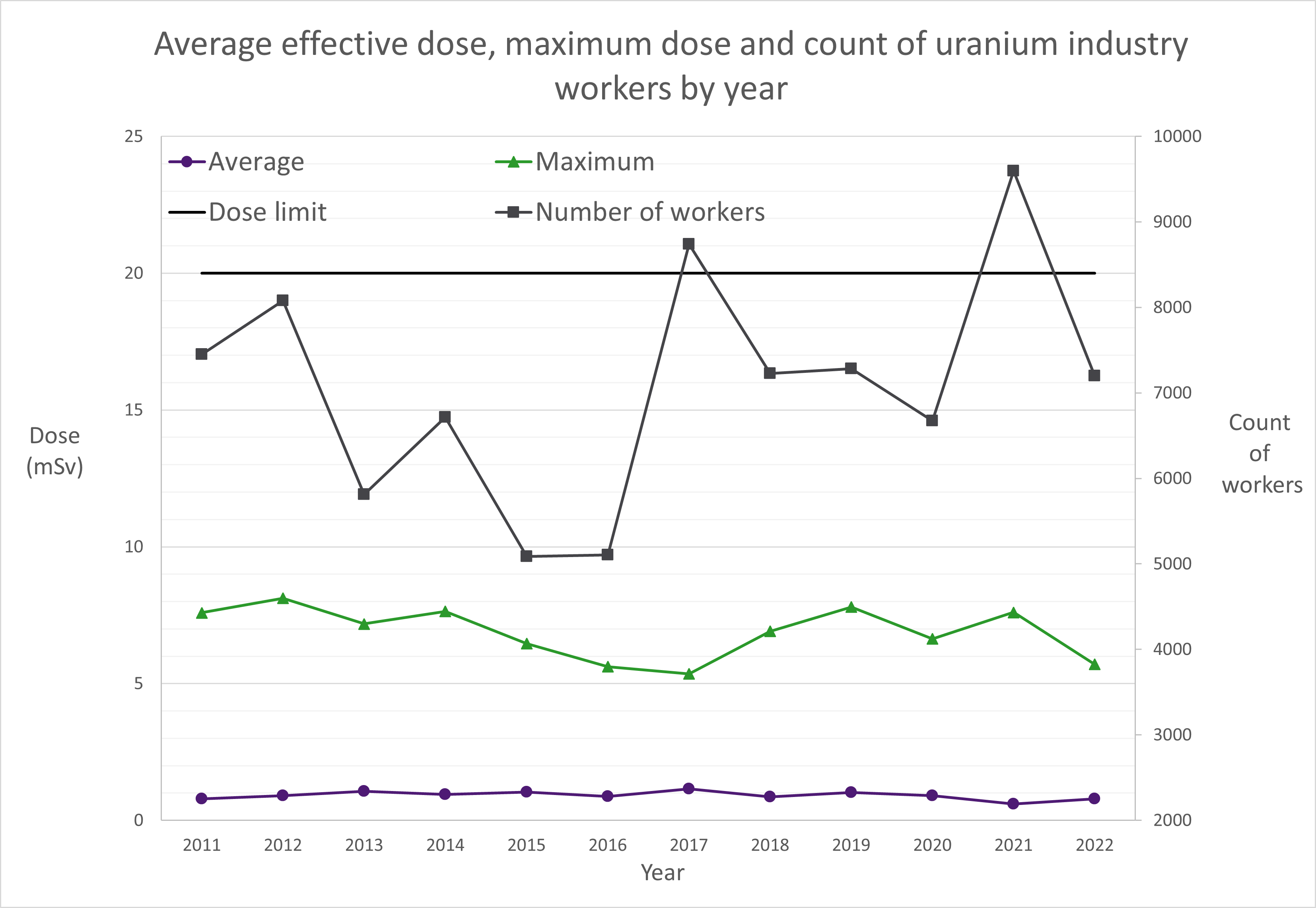
Figure 1: Uranium industry average and maximum effective doses, and count of workers by year (2011-2022).
Figure 2 shows the average effective doses for each of the work categories ‘mining’, ‘processing’ and ‘other’ (‘other’ includes administrative and support staff).
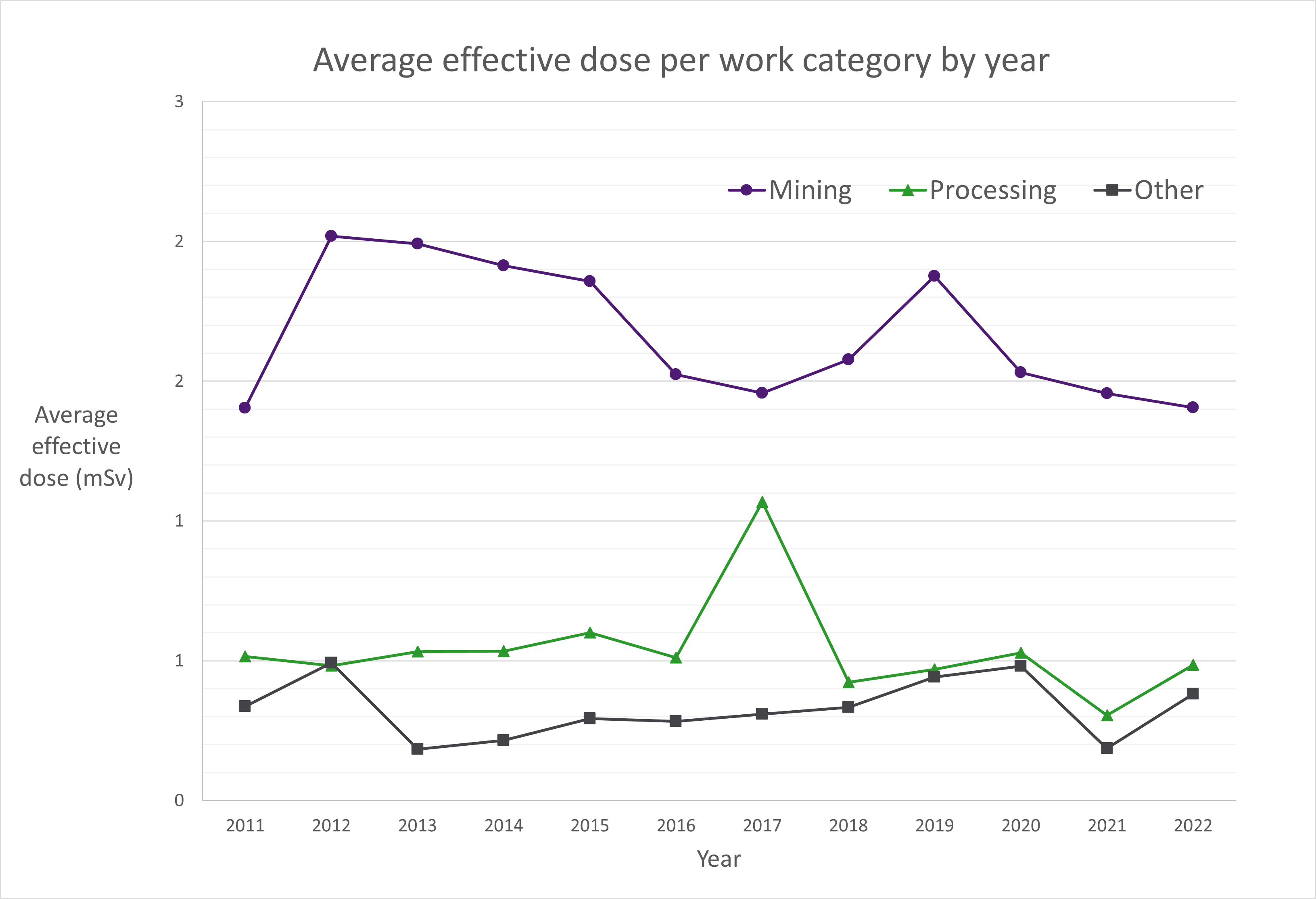
Figure 2: Uranium industry average effective doses per work category (2011-2022).
Since 2020, the average effective dose for miners has decreased from 1.53 mSv to 1.46 mSv in 2021 and then 1.40 mSv in 2022.
From 2020 to 2022, overall, average effective dose for process workers and others, has also decreased i.e., 0.53 mSv to 0.49 mSv and 0.48 mSv to 0.38 mSv respectively. Both work categories showed decreases from 2020 to 2021 followed by increases over the period 2021 to 2022. In 2021, average effective doses for process workers and others were 0.30 mSv and 0.19 mSv, respectively.
In determining these averages, for workers that had more than one work category within a year, the worker was assigned to the category in which they received the highest dose.
Collective effective doses
The collective effective dose can be used as a comparative tool for the optimisation of radiation protection practices. It has been used by UNSCEAR for reporting and comparing exposures from different practices around the world (UNSCEAR 2008).
The collective effective dose (CED) is the sum of the individual doses incurred by a group. The unit of CED is the ‘person-sievert’ (person Sv); this distinguishes the collective dose from the individual dose (IAEA 2007). Collective effective doses from the uranium industry, for the work categories ‘mining’ and ‘processing’, are shown in Figure 3.
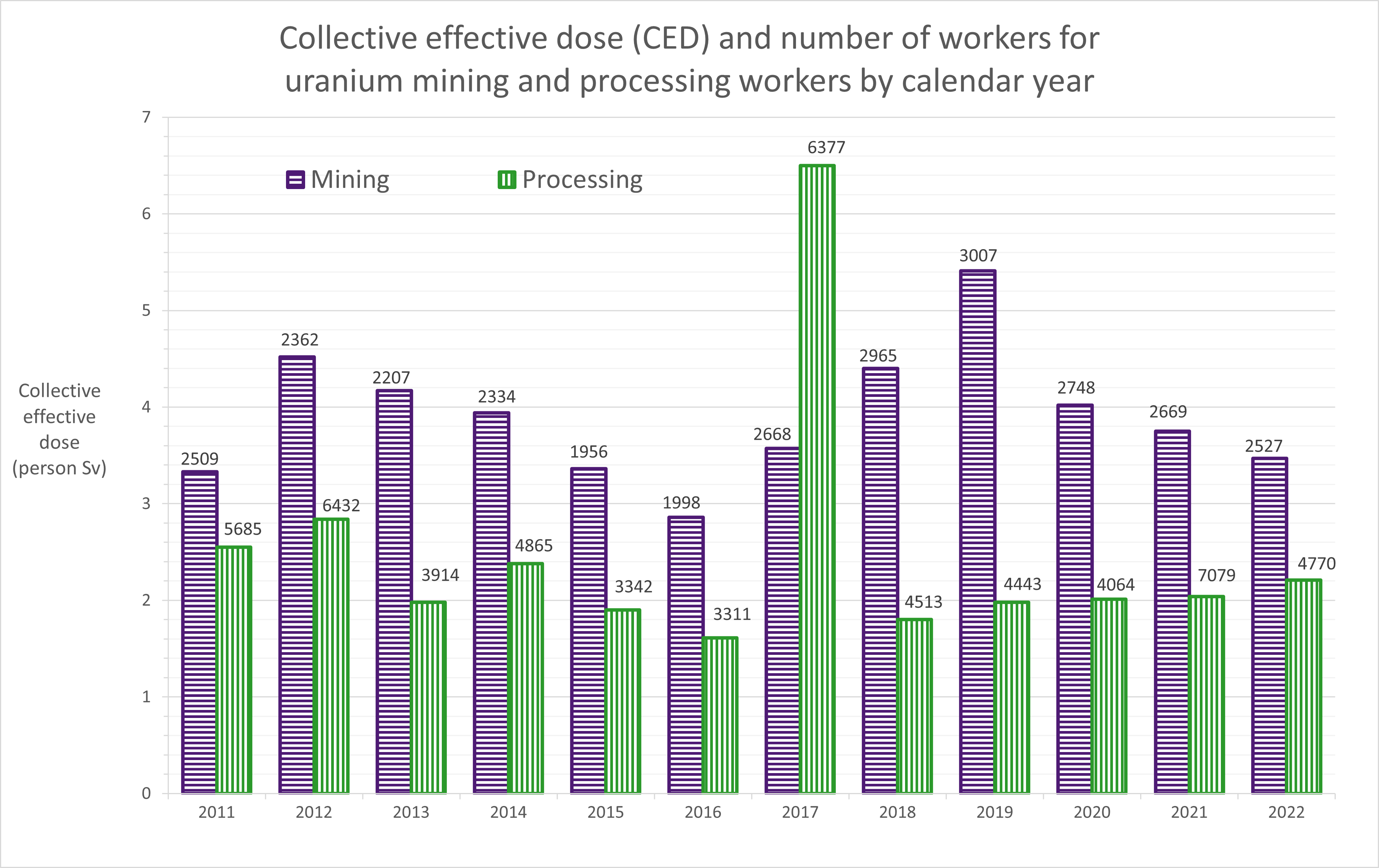
Figure 3 Uranium industry collective effective dose and worker numbers by category (2011 -2022)
Commonwealth organisations
Reported doses
Since an amendment was made to the ARPANS Regulations in 2017, relevant Commonwealth organisations must submit dose records to the ANRDR. Given this, no data relating to the period prior to 2017 are available for analysis.
The four largest submitting organisations are the Australian Nuclear Science and Technology Organisation (ANSTO), the Commonwealth Scientific and Industrial Research Organisation (CSIRO), the Australian National University (ANU) and the Australian Radiation Protection and Nuclear Safety Agency (ARPANSA). These organisations consist of scientific and university researchers, regulatory authorities, nuclear installations, and other source licence holders. For this review the work categories ‘scientific research’, ‘university research’, ‘nuclear facilities’ and ‘miscellaneous’ have been used to group Commonwealth licence holder-workers, where ‘miscellaneous’ includes regulators and other source licence holders. Figure 4 shows the average effective dose for each of these categories per year for the years 2017 to 2022.

Figure 4: Uranium industry average effective doses per work category (2017-2022).
Top 100 doses for Commonwealth organisations
Review of the top 100 doses from submitting Commonwealth organisations can help regulators to tailor their inspection regime and to facilitate discussions with their licence holders. The maximum, average and minimum doses, from the top 100 doses for each year, are presented in Table 1.
| 2021 | 2022 |
Maximum (mSv) | 4.29 | 4.68 |
Average (mSv) | 1.40 | 1.39 |
Minimum (mSv) | 0.61 | 0.51 |
Table 1: Dose statistics for top 100 doses from Commonwealth licence holders for years 2021 and 2022
The top 100 doses from Commonwealth organisations for years 2021 and 2022 are provided in Figure 5 & Figure 6, respectively.'

Figure 5: Dose distribution of the top 100 doses from participating Commonwealth licence holders 2021
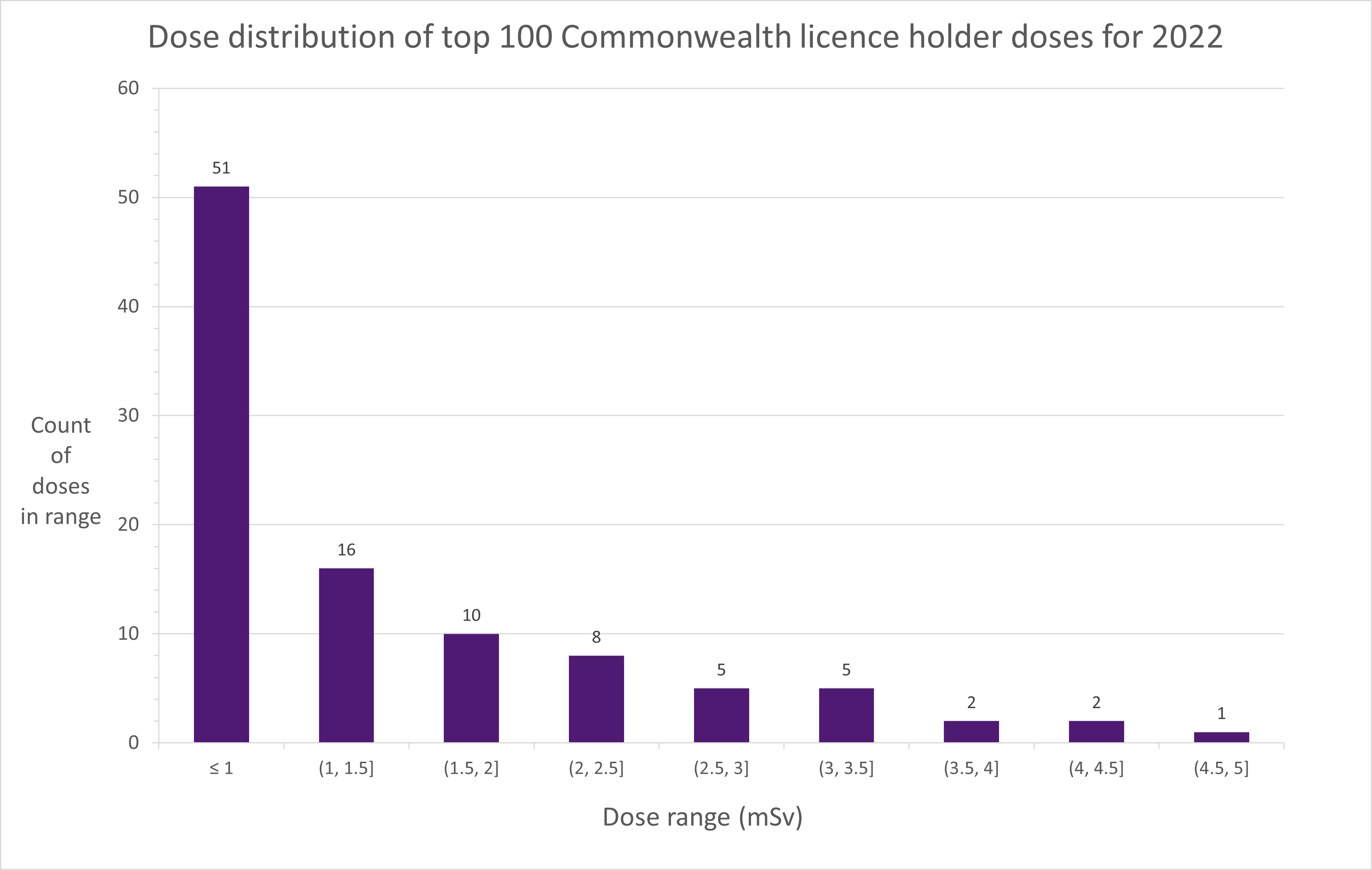
Figure 6: Dose distribution of the top 100 doses from participating Commonwealth licence holders 2022
All workers
Dose distribution
The data from all organisations submitting to the ANRDR has been analysed to produce dose distribution histograms for the years 2021 and 2022; these histograms are presented in Figure 7 and Figure 8, respectively. This is an effective way to demonstrate the distribution of occupational exposures and can minimise the impact of data skewing for doses that have been reported as less than the minimum reportable dose (< MRD).

Figure 7: Dose distribution for all worker records for 2021
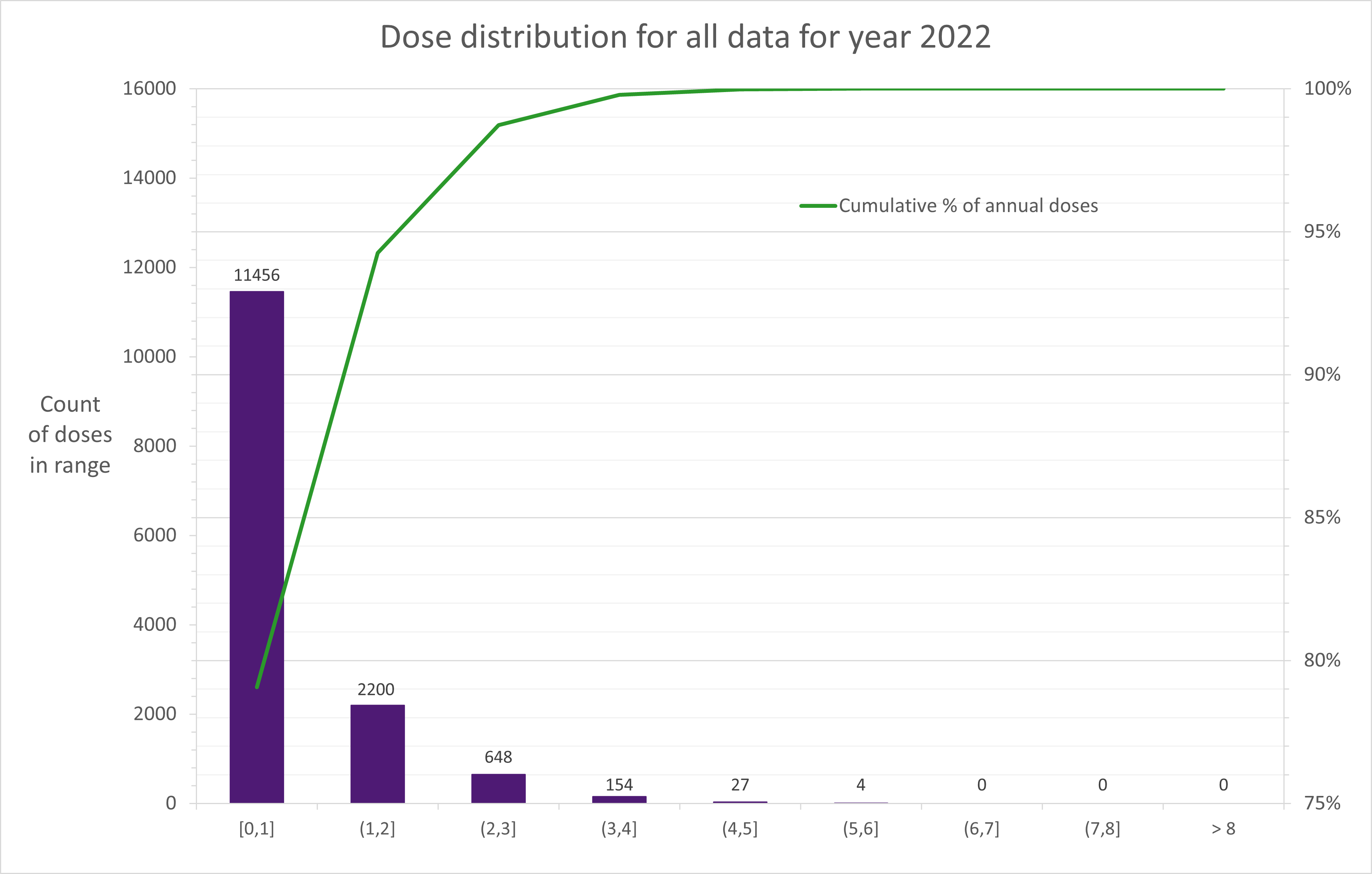
Figure 8: Dose distribution for all worker records for 2022
The maximum and average effective doses for all workers in the ANRDR in the years 2021 and 2022 are presented in Table 2 below.
| 2021 | 2022 |
Maximum (mSv) | 7.60 | 5.71 |
Average (mSv) | 0.43 | 0.55 |
Table 2: Dose statistics for all workers for years 2021 and 2022
Analysis of the cumulative frequency of the doses reported to the ANRDR for 2021 shows that approximately 87% of workers received a dose less than 1 mSv and approximately 99% received a dose less than 3 mSv. Similarly for the year 2022, approximately 79% of workers received a dose less than 1 mSv and approximately 99% received a dose less than 3 mSv. These values are well below the occupational exposure limit of 20 mSv per year. No reported worker doses exceeded half of the occupational exposure limit.
Conclusion
This review of ANRDR data has focussed on the years 2021 and 2022.
The ANRDR maintains complete coverage of occupational radiation exposures for the uranium mining industry as well as collecting doses for a range of Commonwealth licence holders. In relation to those workers working in the uranium mining industry or for relevant Commonwealth license holders, the data shows that, maximum and average, occupational radiation exposures are below the annual dose limit; furthermore, the data shows that for these workers, occupational exposure to ionising radiation in Australia is well controlled.
The deployment of the dosimetry service provider submission ANRDR system will ensure that the ANRDR achieves its vision to capture all doses for occupationally exposed workers in Australia. This process is planned to become a requirement of a future dosimetry service provider accreditation scheme.


